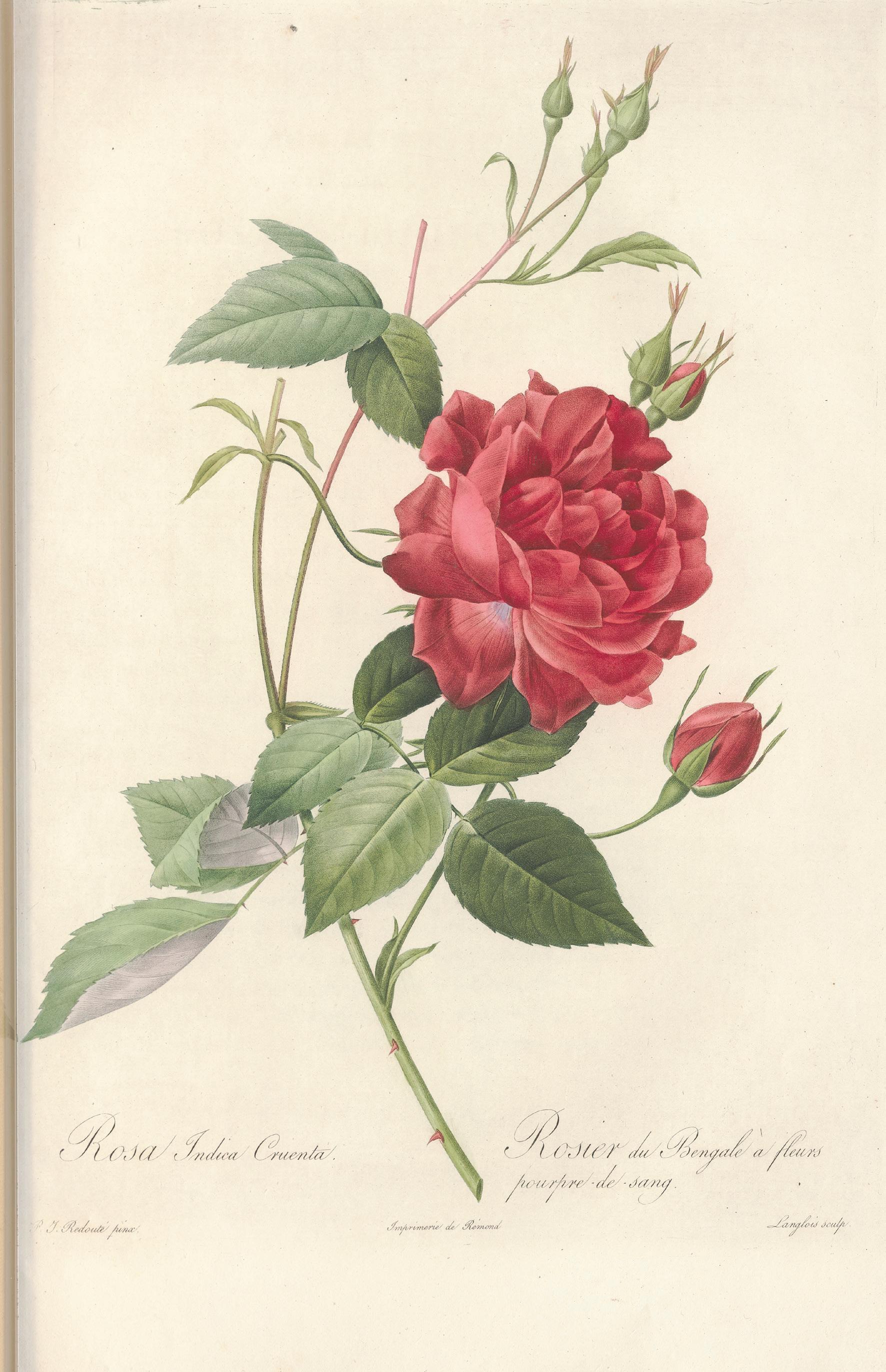
2 minute read
Hunting Plants
A Closer Look
Examine the print of the rose. What parts of the plant are depicted? What has been left out? Why would the artist show that part and not others?
Advertisement
Do you have any collections? What parts of your collection would you want to share with others? What would a publication of your collection look like?
How did the artist depict the texture of this plant? What would it feel like? What do you think the purpose of this illustration was?
The art of botanical illustration, especially in printed books, allowed collectors to share their rare treasures in the days when shipping plant material proved impractical. Living plants would die in transit. Pressed and dried materials were subject to crumbling into dust, besides being unsatisfactory representatives of the thriving vegetation. Illustrations were useful accompaniments to a box full of seeds or bulbs. Explorers and collectors could commission botanical artists such as Redouté to depict the distinctive qualities of the varieties they accumulated, in this case more than two hundred roses from Empress Josephine’s garden at Château de Malmaison. Plant collecting was a form of connoisseurship that spoke to one’s social standing; only those with the time and financial means could make a deep study of plants, collecting illustrated botanical books, and trading seeds, bulbs or rootstock, let alone funding explorations to procure rare specimens. Only a trained eye could easily discern the one hundred and seventy different rose varieties depicted in Redouté’s prints Les Roses. Redouté came from a family of artists and was the official court painter of Marie Antoinette. He collaborated with the most notable botanists of his day, working with flora collections and plant explorations, gaining a broad connoisseurship of the botanical world. He tread the line between a flower painter who depicts realistic but idealized blooms to please the eye and a botanical artist who creates beautiful but highly accurate representations to satisfy the scientist. He is credited with advancing the technique of stipple engraving, in which his watercolors were translated by talented engravers into tiny dots on copperplate rather than the usual lines and crosshatchings. The plates were run though the press once in black ink, and again in color, then applied a la poupée, a technique that allowed for great subtlety and variation in color. Redouté retouched and colored some of the plates by hand, making the illustrations as extraordinary as the collection they represent.
Pierre Joseph Redouté. Les Roses. Paris, Imprimerie de Firmin Didot, 1817. https://www.loc.gov/resource/rbctos.2018rosen1892v1/?sp=333
Plant Boxes
These early plant transporters are depicted in John Ellis’ book describing how plants and seeds could be transferred from region to region or country to country. This safe way to transport plants was important for international trade, making it possible to transplant profit-oriented significant plants from their native habitats and introduce them to new countries and new markets. However, along with plants came soil and insects, introducing some invasive species to other lands.

John Ellis. Directions for bringing over seeds and plants, from the East-Indies and other distant countries, in a state of vegetation... [1770]. https://www.biodiversitylibrary.org/page/48674381#page/7/ mode/1up









